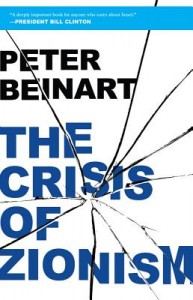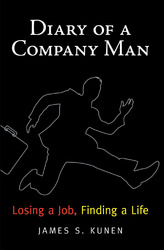 #FridayReads–DIARY OF A COMPANY MAN: Losing a Job, Finding a Life by James S. Kunen, whose Strawberry Statement: Notes of a College Revolutionary was a key 1960s text. After he was laid off from his corporate job in February 2008, Kunen describes himself as too young to retire, too old to hire. I’m still reading that first section of the book, over the weekend I’ll read how he weathers the storm of disemployment and comes out somewhere on the other side. Having experienced my own layoff, Kunen’s is a pitch-perfect rendering of the experience.
#FridayReads–DIARY OF A COMPANY MAN: Losing a Job, Finding a Life by James S. Kunen, whose Strawberry Statement: Notes of a College Revolutionary was a key 1960s text. After he was laid off from his corporate job in February 2008, Kunen describes himself as too young to retire, too old to hire. I’m still reading that first section of the book, over the weekend I’ll read how he weathers the storm of disemployment and comes out somewhere on the other side. Having experienced my own layoff, Kunen’s is a pitch-perfect rendering of the experience.
Also reading and loving Wayward Saints, a tragi-comic tale of rock ‘n roll, family, and second chances in life, by Suzzy Roche, of the singing Roches.
Update: I’ve now finished both these books, and loved them both, among the very best I’ve read thus far in 2012.
The Kunen book was really excellent on finding a new way through (mid-)life. Enduring my own layoff and disemployment, it was really inspiring to see Kunen, who’d worked in corporate PR at TIME, Inc. before he got dumped by the corporation, discovers a new meaning teaching English to immigrants. It’s titled Diary of a Company Man, and I kept thinking of Aaron Copland’s “Fanfare for a Common Man,” only it’s not etched in musical notes, but prose.
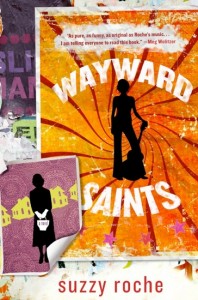 I’ve also now finished Suzzy Roche’s novel and found it to be an infectiously readable treat. I really loved it. It’s filled with wonderful characters spanning the generations and memorable situations. While Roche undoubtedly drew on her years as a traveling musician to flesh out the story, it doesn’t read as if it’s merely a novel about rock ‘n roll written by a musician; it’s a truly satisfying novel by a real writer, clearly not something that was just tossed off. Among the most striking features of it was the relationship between the musician protagonist, Mary Saint, and her mother Jean, from whom she’s long been separated. They learn how to forgive each other for past injuries. The second was the friendship between Mary Saint and her roommate Thaddeus, who becomes her confidant and motivator, able to push her to see what she’s still capable of doing.
I’ve also now finished Suzzy Roche’s novel and found it to be an infectiously readable treat. I really loved it. It’s filled with wonderful characters spanning the generations and memorable situations. While Roche undoubtedly drew on her years as a traveling musician to flesh out the story, it doesn’t read as if it’s merely a novel about rock ‘n roll written by a musician; it’s a truly satisfying novel by a real writer, clearly not something that was just tossed off. Among the most striking features of it was the relationship between the musician protagonist, Mary Saint, and her mother Jean, from whom she’s long been separated. They learn how to forgive each other for past injuries. The second was the friendship between Mary Saint and her roommate Thaddeus, who becomes her confidant and motivator, able to push her to see what she’s still capable of doing.
 I’ve entered The Great Gray Bridge in a contest sponsored by Goodreads. They will be selecting 4 top book blogs for special recognition and perks at Book Expo America (BEA) in June. Voting by the public began April 10 and continues through April 23. There will also be a juried element of the competition. I’ll be posting throughout the two weeks to remind folks, and sending out updates via Facebook and Twitter. I also have a handy widget on the right side of my blog just below “Foundational Posts” to vote for this site. In entering the contest, I submitted five entries representative of my books and publishing coverage. The first one I cited was Lost American Writer Found–Jim Tully. I’ll put others up as the contest continues. I hope you enjoy reading my blog and will vote for it. Thanks for your support.
I’ve entered The Great Gray Bridge in a contest sponsored by Goodreads. They will be selecting 4 top book blogs for special recognition and perks at Book Expo America (BEA) in June. Voting by the public began April 10 and continues through April 23. There will also be a juried element of the competition. I’ll be posting throughout the two weeks to remind folks, and sending out updates via Facebook and Twitter. I also have a handy widget on the right side of my blog just below “Foundational Posts” to vote for this site. In entering the contest, I submitted five entries representative of my books and publishing coverage. The first one I cited was Lost American Writer Found–Jim Tully. I’ll put others up as the contest continues. I hope you enjoy reading my blog and will vote for it. Thanks for your support.
 #FridayReads, April 6, “Prague Fatale,” the eighth Bernie Gunther novel in Philip Kerr’s matchless Berlin Noir series. And in nonfiction, Deadly Spin, former health insurance insider Wendell Potter’s lucid dissection of how insurers rig the healthcare game.
#FridayReads, April 6, “Prague Fatale,” the eighth Bernie Gunther novel in Philip Kerr’s matchless Berlin Noir series. And in nonfiction, Deadly Spin, former health insurance insider Wendell Potter’s lucid dissection of how insurers rig the healthcare game. Hiding in plain sight is confirmation in
Hiding in plain sight is confirmation in  #FridayReads The New Yorker‘s excerpt from Robert Caro’s fourth volume in his long-running LBJ bio. Powerful narrative of the day JFK was killed and LBJ took office, and how this picture came to be taken by WH photographer Cecil Stoughton. As readers of this blog may recall, I’ve had opportunities to
#FridayReads The New Yorker‘s excerpt from Robert Caro’s fourth volume in his long-running LBJ bio. Powerful narrative of the day JFK was killed and LBJ took office, and how this picture came to be taken by WH photographer Cecil Stoughton. As readers of this blog may recall, I’ve had opportunities to 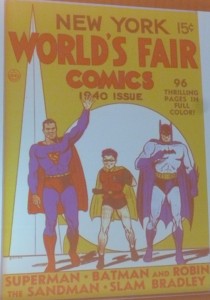
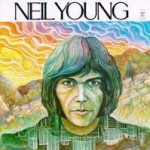


 #FridayReads–DIARY OF A COMPANY MAN: Losing a Job, Finding a Life by James S. Kunen, whose Strawberry Statement: Notes of a College Revolutionary was a key 1960s text. After he was laid off from his corporate job in February 2008, Kunen describes himself as too young to retire, too old to hire. I’m still reading that first section of the book, over the weekend I’ll read how he weathers the storm of disemployment and comes out somewhere on the other side. Having experienced my own layoff, Kunen’s is a pitch-perfect rendering of the experience.
#FridayReads–DIARY OF A COMPANY MAN: Losing a Job, Finding a Life by James S. Kunen, whose Strawberry Statement: Notes of a College Revolutionary was a key 1960s text. After he was laid off from his corporate job in February 2008, Kunen describes himself as too young to retire, too old to hire. I’m still reading that first section of the book, over the weekend I’ll read how he weathers the storm of disemployment and comes out somewhere on the other side. Having experienced my own layoff, Kunen’s is a pitch-perfect rendering of the experience. I’ve also now finished Suzzy Roche’s novel and found it to be an infectiously readable treat. I really loved it. It’s filled with wonderful characters spanning the generations and memorable situations. While Roche undoubtedly drew on her years as a traveling musician to flesh out the story, it doesn’t read as if it’s merely a novel about rock ‘n roll written by a musician; it’s a truly satisfying novel by a real writer, clearly not something that was just tossed off. Among the most striking features of it was the relationship between the musician protagonist, Mary Saint, and her mother Jean, from whom she’s long been separated. They learn how to forgive each other for past injuries. The second was the friendship between Mary Saint and her roommate Thaddeus, who becomes her confidant and motivator, able to push her to see what she’s still capable of doing.
I’ve also now finished Suzzy Roche’s novel and found it to be an infectiously readable treat. I really loved it. It’s filled with wonderful characters spanning the generations and memorable situations. While Roche undoubtedly drew on her years as a traveling musician to flesh out the story, it doesn’t read as if it’s merely a novel about rock ‘n roll written by a musician; it’s a truly satisfying novel by a real writer, clearly not something that was just tossed off. Among the most striking features of it was the relationship between the musician protagonist, Mary Saint, and her mother Jean, from whom she’s long been separated. They learn how to forgive each other for past injuries. The second was the friendship between Mary Saint and her roommate Thaddeus, who becomes her confidant and motivator, able to push her to see what she’s still capable of doing.
